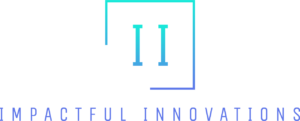In the dynamic landscape of business operations, efficient management of assets is paramount for sustained success. This holds particularly true in the context of leasing, where businesses rely on leased assets to fuel their operations. However, managing leases effectively can often be a complex and time-consuming endeavor, requiring meticulous attention to detail and adherence to regulatory requirements. This is where leasing management solutions come into play, offering streamlined processes and enhanced efficiency for businesses in the Philippines.
Understanding Leasing Management
Leasing management encompasses the processes and systems involved in effectively managing leased assets throughout their lifecycle. It involves tasks such as lease agreement creation, tracking lease terms and payments, invoicing, document management, and ensuring compliance with regulatory standards. By centralizing these tasks within a comprehensive leasing management solution, businesses can streamline their operations and optimize resource allocation.
Exploring the Leasing Management Solution in the Philippines
In the Philippines, businesses face unique challenges in lease management, ranging from regulatory complexities to the need for efficient financial management. The Leasing Management System Solution is specifically designed to address these challenges, providing businesses with a robust platform to manage their leased assets effectively.
Key Features of Leasing Management System Solution
A. Lease Agreement Creation and Management
The system enables businesses to create comprehensive lease agreements with ease, defining terms, rental rates, payment schedules, and additional conditions. These agreements are securely stored within the system for easy reference and management.
B. Lease Term Tracking and Notifications
Automated notifications ensure that businesses stay informed about critical lease milestones, such as renewals and terminations, facilitating timely actions and compliance with contractual obligations.
C. Rental Invoicing and Payment Processing
The system automates rental invoicing and payment processing, generating accurate invoices based on agreed terms and sending them to lessees. It also tracks payments and sends reminders for efficient financial management.
D. Document Management
Users can upload and store important documents related to leased assets, such as lease agreements, insurance certificates, and inspection reports, ensuring easy access and simplifying audit processes.
E. Compliance and Regulatory Adherence
The system incorporates features to help businesses maintain compliance with regulatory requirements and industry standards, including lease accounting standards and tax regulations.
Advantages of Implementing Leasing Management System
Implementing a leasing management solution offers numerous benefits for businesses in the Philippines, including improved efficiency, enhanced accuracy, cost savings, and better compliance with regulatory standards.
Best Practices for Effective Leasing Management
To maximize the benefits of leasing management, businesses should adhere to best practices such as maintaining clear lease agreements, proactively tracking lease terms, leveraging automation for invoicing and payment processing, and ensuring proper document management and compliance practices.
Takeaway
Efficient leasing management is essential for businesses in the Philippines to optimize their asset utilization and ensure compliance with regulatory standards. By adopting a comprehensive leasing management solution, businesses can streamline their operations, enhance financial management, and position themselves for long-term success in a competitive market.




